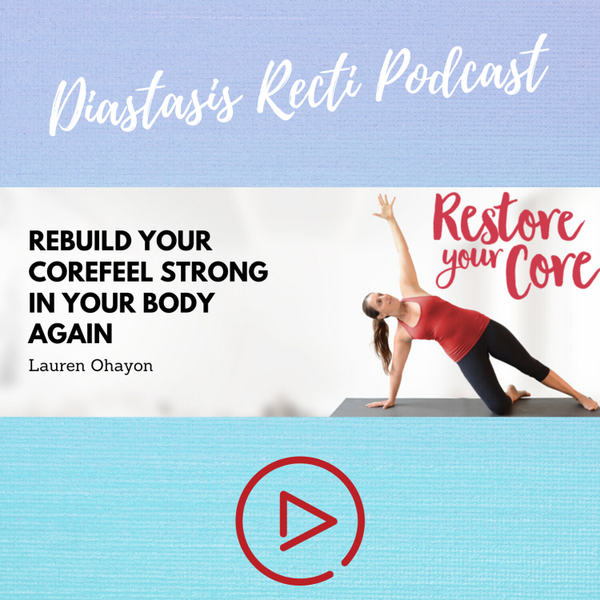
Postpartum Physical Therapy
- S1E31
- 03:05
- February 19th 2021
Postpartum physical therapy can be a great way to restore function and strength in your core and pelvic floor muscles. Giving birth places a strain on your body and it is no surprise that many postpartum people experience pelvic pain and discomfort for weeks to months after delivery. Even after the typical 8 week recovery time, many women may require more time or a pelvic floor workout plan to help get them back on their feet, especially women who delivered via C-section.
Although you may never look how you did before your pregnancy, physical therapy post pregnancy can help relieve symptoms of pelvic organ prolapse, diastasis recti, and other postpartum symptoms.
Physical Therapy After Pregnancy
Physical therapy for pregnancy and after pregnancy can help strengthen and restore pelvic floor muscle and joint function, increase body awareness, and also provide education and instruction on how to modify your daily activities to serve you in your recovery. Some of the primary physical therapy options available include:
- Pelvic girdle and lumbar spine realignment
- Prenatal tissue and joint mobilization
- Postpartum external and internal tissue, joint, scar, and visceral movement therapy
- Strength training for pelvic floor muscles
- Pelvic floor stabilization and core strength exercises
- Proper posture, postural strengthening for back pain
- Diastasis recti rehabilitation
- Body mechanics training and education
- At home strategies and education for self-care
How Do You Know if You Need Pelvic Floor Therapy?
The two most common conditions many postpartum people face are diastasis recti and pelvic organ prolapse. Pregnancy and delivery create an imbalance of muscles and ligament tension. This can leave the pelvic floor and abdominals unsupported potentially leading to prolapse or DRA. If you are experiencing any of these symptoms, you may need to consider physical therapy or movement therapy:
- Constipation
- Urinary incontinence
- Fecal incontinence
- Pain during intercourse
- Vaginal pain
- Rectal pain
- Low back pain
- Pelvic pain
- Diastasis Recti – separation of the abdominal muscles
- Pelvic organ prolapse
- Pubic bone pain
- Pelvic girdle pain
A physical therapist can help you recover from many of these symptoms with the education and therapy options mentioned above. If your physical therapist is specially trained to treat pelvic floor issues, they can help significantly reduce the painful symptoms you may be experiencing while also strengthening your core and pelvic floor muscles.
What Helps with Postpartum Pain?
Physical therapy can be a great way to help women recover from postpartum issues. However, not all exercise routines or core training workouts are created equal. Restoring your body’s function is not something to do quickly or forcefully. Exercise is important, but resting and pacing yourself are far more vital to your recovery than rushing it. Postpartum recovery requires a specific re-training of your body to regain strength and integrity. Long-term functionality is better than getting slim fast.
Exercise
As you begin to exercise postpartum, it is important that your focus be on the major muscle groups affected by your delivery. Short spurts of slow, simple stretches and yoga poses are a great place to begin. Shoot for around 10 to 20 minutes a day of light exercise and stretching. Many exercises can be done during your recovery, but it’s important that you don’t overexert yourself before the 8 week mark is up (and for some women, even longer). As you continue to regain strength and functionality, you can gradually increase your workout time and intensity.
Rest
If I could have a dollar for every person who wished they had rested more in order to spare themselves injury. Rest is so important for healing your body postpartum and ensuring that you do not damage your core and your pelvic floor. We recommend getting back into exercise at least 8 weeks postpartum, but even then, easing into it is key.
Restore Your Core: Diastasis Recti and Pelvic Floor Talks
The Restore Your Core podcast is all about health and fitness for those struggling with Diastasis Recti or Pelvic Floor issues.
Lauren Ohayon makes videos, runs a thriving facebook group, and creates blogs that help people to feel better and reclaim their healthy bodies.
https://restoreyourcore.com/learn/diastasis-recti/
If you're too busy to read the blog then feel free to listen to the podcast! We hope to be a part of your core restoration journey.